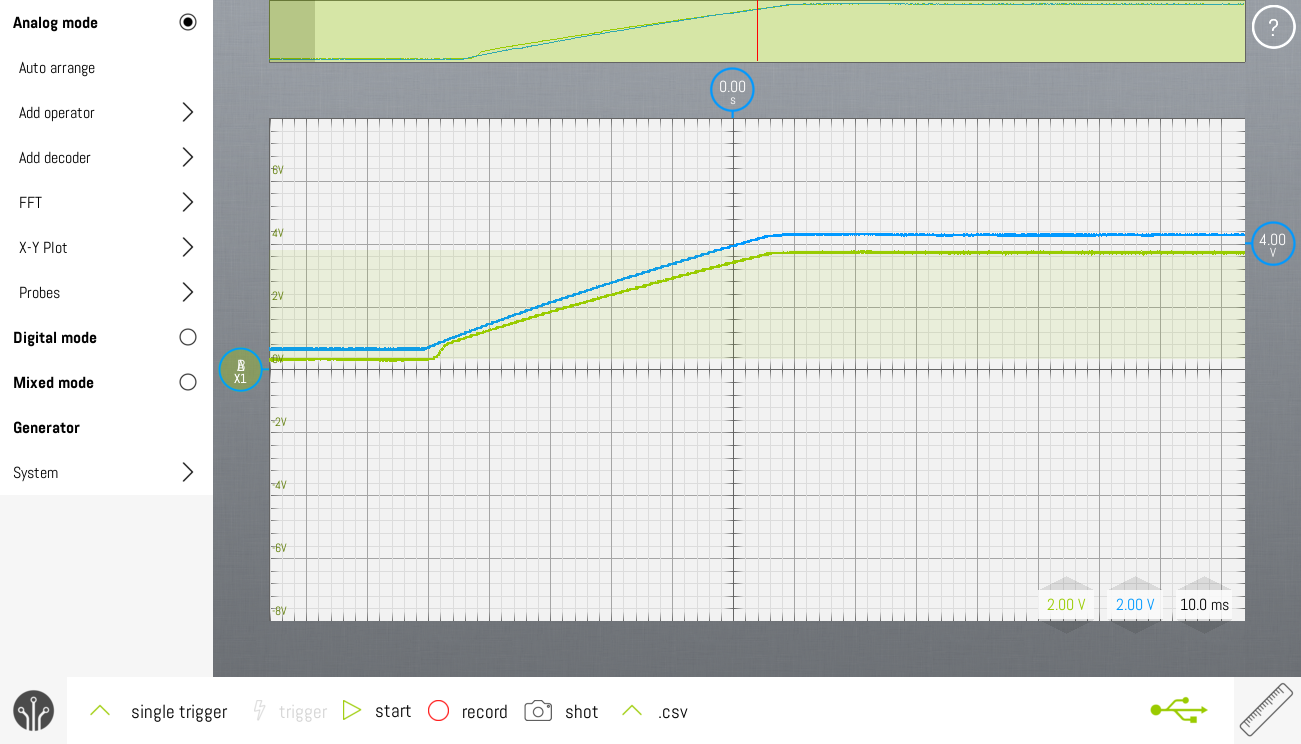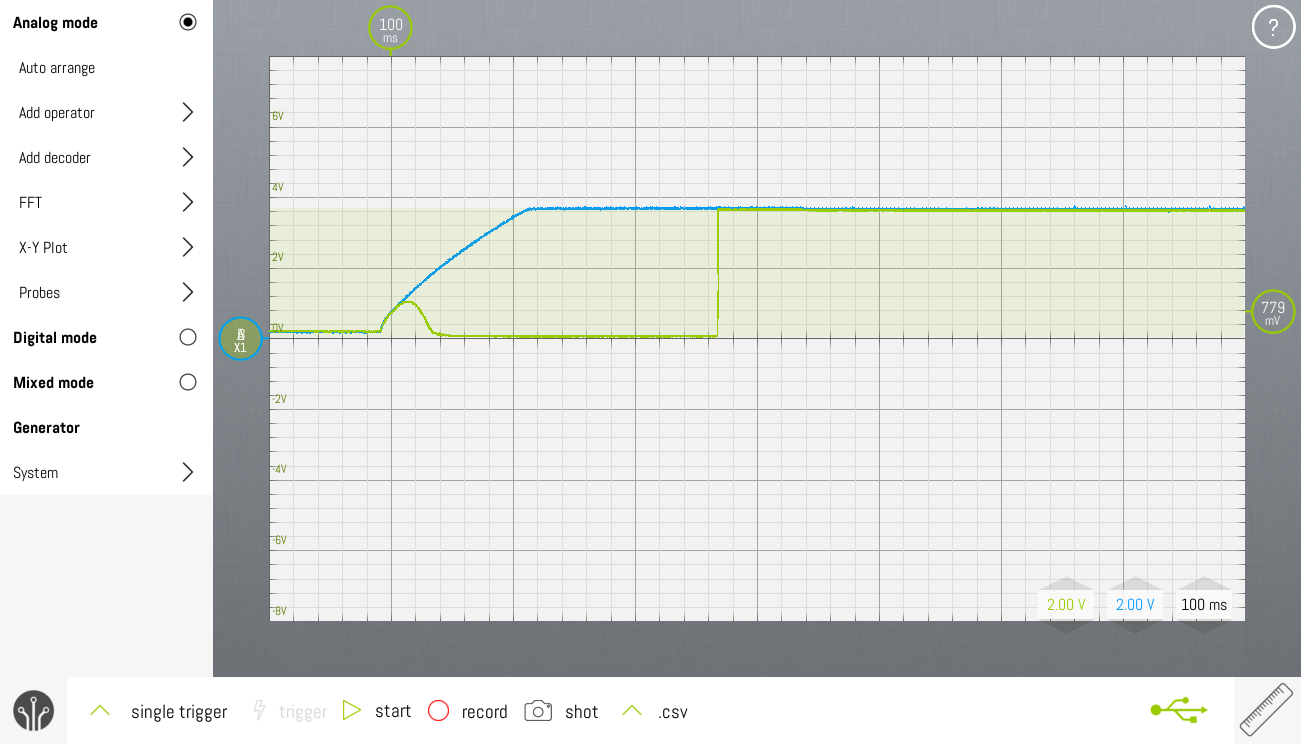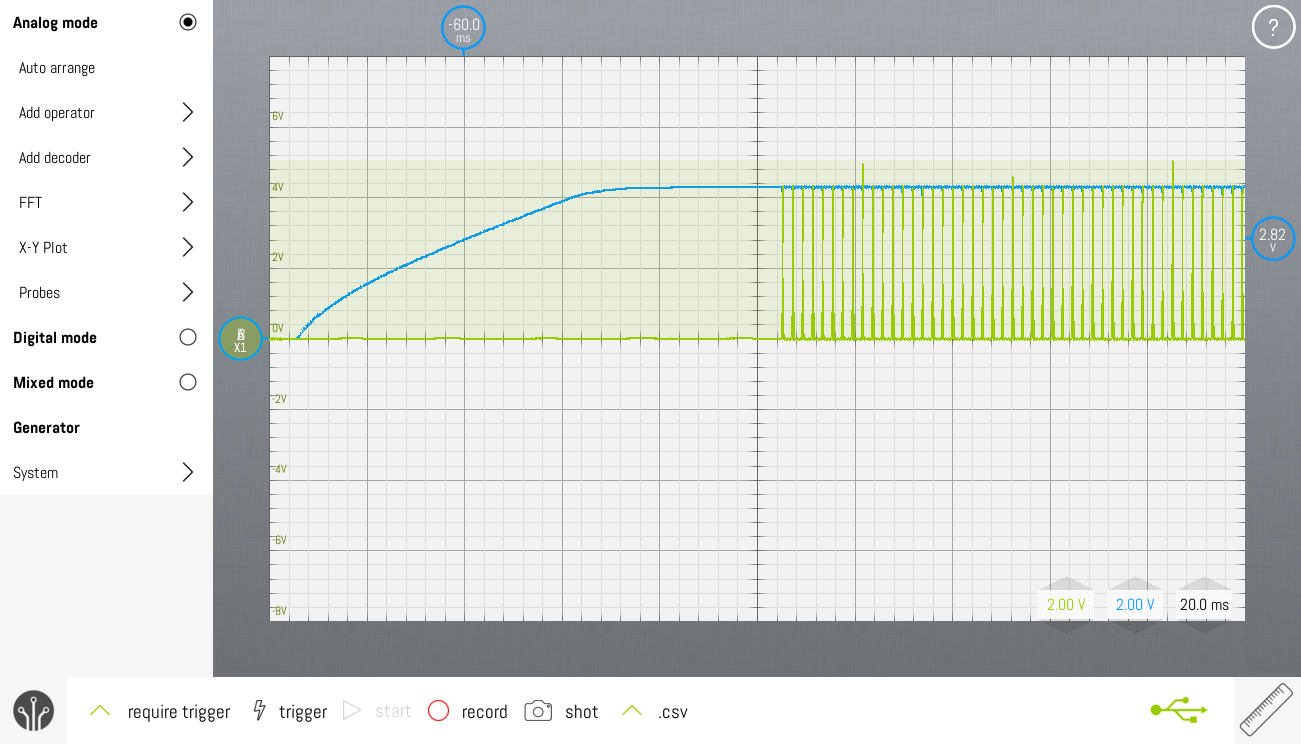Fail...
- Connecting to the SLIC KS-0835F: everything works perfectly.
- Connecting to the FXS port of the internet gateway: FAIL
- The DTMF-converter doesn't start up reliably. It sometimes runs in bursts, as if the crystal doesn't start reliably.
- The number doesn't get dialed.
Issue 1: Startup problem
There's no reset circuitry present on the breadboard. The BOD is disabled as well.

The reset level (in green) follows the power supply voltage (in blue). Due to the charging of a 470µF capacitor, voltage ramp up is very slow. Nearly 60ms before full voltage is reached.
An option is to add a reset controller which has a timeout of 100ms. The reset trigger level should be 2.6V. This will avoid spurious resets during pulse dialing.

An alternative approach is to use the 2.7V BOD in the attiny85.

Using the BOD seems to work as reliably as the external reset controller. Using the BOD saves us four components in the BoM.
Remark:
The AVR-ISP MkII automatically generates a reset pulse at power up of the MCU. Be sure to disconnect the programmer during testing.
Issue 2: FXS doesn't recognize DTMF
This problem has two causes:
DTMF signal too weak
Connecting the Philips DECT to the SLIC again showed that the DTMF-signal that this design generates is too weak. Increasing the resistor between the reference and cathode of the bottom TLV431 to 39K solves this problem.
DTMF timing incorrect
The original idea was to generate a DTMF-digit immediately after a digit has been dialed. The DECT doesn't work that way. You form the number first. After that you "pick up" the horn, which initiates the DTMF-sequence of your formed number.
The pulse-dtmf-converter successfully dialed my cellphone when it was configured in the same way.
Finally...SUCCESS
 Christoph Tack
Christoph Tack
Discussions
Become a Hackaday.io Member
Create an account to leave a comment. Already have an account? Log In.